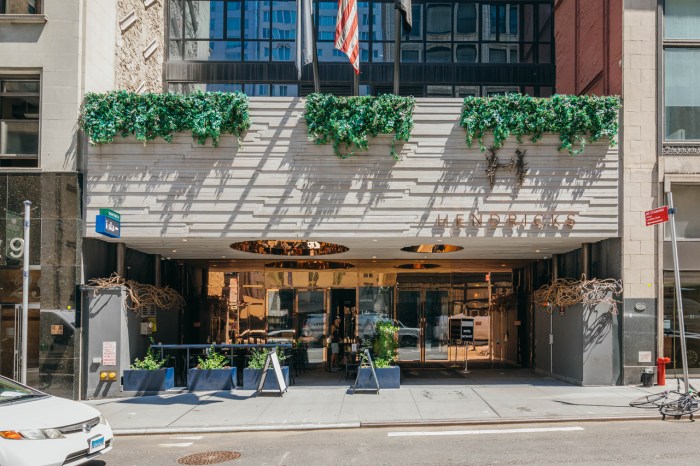
Despite having a large population of Guyanese immigrants and descendants, the Guyanese restaurant scene is little known in New York City. But in pockets of Queens, Brooklyn and the Bronx, diners can experience some of the most authentic cuisine.
Guyanese immigrants make up the fifth-largest group of foreign-born residents in the city, behind Dominican, Chinese, Mexican and Jamaican people, according to the U.S. Census Bureau. Ozone Park and Richmond Hill, Queens, have the highest population of Guyanese immigrants and descents, so much that the strip of Liberty Avenue that cuts through the neighborhoods is dubbed “Little Guyana.”
Not to be confused with Guinea or Ghana in Africa, Guyana is a small country in northern South America previously colonized by the Dutch and British. It has strong cultural ties with the Caribbean, India, Africa and China, and its population consists of six different ethnic groups.
The cuisine in Guyana reflects that diversity — its dishes have various cultural influences and flavors. Curry and roti, for example, are a big part of the cuisine that come from India, and some of the staple ingredients in Guyanese dishes have a Caribbean flair — cassava and plantains. There’s also a Guyanese-style lo mein, which originates from China.
Here’s where you can find some of the most authentic Guyanese cuisine in New York:
Sybil’s in Richmond Hill reflects the cuisine’s unique blend of cultures. Since being founded in 1976 by Sybil Bernard-Kerrutt, the restaurant has become an iconic establishment in the Guyanese community. Its wide-ranging menu includes a variety of curries ($7.50 to $13.50), pepper pot ($10.50 to $12.50), chow mein ($5 to $10.50) and black pudding ($9.50).

The restaurant also prides itself on its extensive selection of baked treats and beverages made in-house, such as the peanut punch ($4.50) — a Caribbean take on a peanut butter smoothie — and sorrel ($4.50) — a red, slightly sour drink with hibiscus. Because of the high traffic, the restaurant operates on a number ticket system, which may be easy to miss with many people in the queue.
Despite the crowd, Basil Francis, a benefits enroller who lives in Briarwood, has been coming to Sybil’s regularly for 30 years. He swears by just about everything on the menu, including the curry, fish and lo mein, to name a few.
“I’ve had everything on the menu,” he said. “It’s worth the wait — I’ve been here about 30 minutes. Trust me.”
Often used in Guyanese and Caribbean cooking are curry powder, turmeric, garam masala and ginger, among others.
“We have spices. That’s the No. 1 thing,” Francis said. “When you collaborate all the spices, it gives you a sense of what the Caribbean is about.”
But to others, what makes Guyanese food stand out is the diversity of the dishes and combination of flavors from several parts of the world. Because of Guyana’s heterogeneous population, the cuisine offers “something for everyone,” according to Brian Nelson, manager of German’s Soup in East Flatbush, Brooklyn.
German’s Soup is a familiar name to Guyanese natives. It was originally founded by Hubert “German” Urling in 1960 in Guyana’s capital Georgetown, and its recently opened Brooklyn branch is its first foray overseas.

Since opening in May, German’s Soup on Utica Avenue and Linden Boulevard has gotten a lot of traffic thanks to the high population of Guyanese and Trinidadian residents in the neighborhood.
“When the Guyanese go back home to Guyana, what they do is visit German’s Soup,” he said. “So we brought German’s to them.”
The restaurant specializes in its traditional Guyanese soups, as the name suggests. A popular favorite is the famous cow heel soup, made with cow heel, ground provisions — which consists of cassava, plantains and eddo — and pasta. It’s Nelson’s personal favorite.
“There’s something unique about that cow heel soup,” Nelson said.
The soup ($8 for a generous “small” and $9 for a large) is thick and opaque, reminiscent of a Chinese egg drop soup, and it has a distinct peppery flavor made with a special blend of spices from Guyana. Nelson said he couldn’t disclose the specific spices as it is a secret recipe developed by Urling in the ’60s. German’s Soup also serves entrees such as stew snapper ($15) and pepper pot ($8 for a small, $9 for a large).
The pepperpot is another famous Guyanese dish that is a popular favorite at Island Express in Flatbush, Brooklyn, a sister restaurant of Sybil’s. The Amerindian-style classic ($12) is a mix of braised beef, oxtail and cowfoot prepared in a sweet and slightly bitter sauce made of cassareep — the extract of a cassava root — that resembles the Mexican mole sauce. The mixture is then ladled on top of a heaping portion of rice and peas.
Island Express also offers cook-up rice ($7.50), a parboiled rice dish with chicken that is traditionally eaten on New Year’s Eve. The pepperpot, cook-up rice and its many kinds of curry, including chicken, shrimp and goat ($6.50 to $9), come with a side of plantains, okra, spinach or channa.
The pepperpot and cook-up rice are the restaurant’s best-selling dishes, according to Gina McCarthy, Island Express’ owner. All the dishes are made by using her mom’s recipe, and one of her favorites is the cocktail patty ($1.50), which is a small pot pie-like appetizer filled with ground beef or chicken.
The authenticity and homeyness in Guyanese cooking are what set the food apart from others, McCarthy said.

“It’s really home cooking. Everything is cooked from home and fresh. That’s what I think makes the difference,” she said.
The restaurant also has a bakery, with a display case filled with Guyanese treats such as pineapple and guava tarts ($1.25 each or six for $6), cassava pone ($2) and currents roll ($2). The pineapple and guava tarts are flaky with a flavorful yet not-too-sweet filling whereas the cassava pone, or yuca cake, is similar to a rice cake with its dense and glutinous texture and has hints of coconut and almond.
Speaking of bakeries, back in Richmond Hill is a grocery store-bakery hybrid called Little Guyana Bake Shop. With one half of the store stocked with Guyanese ingredients and spices and the other selling freshly baked breads, tarts and cakes, Little Guyana Bake Shop attracts customers from even outside of the city.
“The plait bread, a traditional Guyanese bread, tennis roll, pine tarts, cheese roll — those are our top-selling items,” said Raj Vaswani, Little Guyana Bake Shop’s owner.
Also known as Chinese cake, the bakery’s black eye — flaky round pastry with thick red bean paste inside — is what brings Yvonne Isaac, a factory worker, to the shop from Jersey City, New Jersey. She also comes for the salara, a red coconut rolled-up bread with coconut flakes and hints of almond. Most treats here are three for $2 of the same kind or 75 cents each when mixing.
Everything at the bakery is delicious and authentic, Isaac says.
“It’s special because everything is made with natural ingredients, spices,” Isaac said.
The sentiment was shared by Fazie Ally, a teacher from New Hyde Park who drove 30 minutes to Little Guyana.
“People should try everything (in Guyanese cuisine). Everything is good,” Ally said. “The black pudding, cassava ball, potato ball, everything.”

Outside of Queens and Brooklyn, authentic Guyanese offerings can also be found in the Bronx. Carifesta in Wakefield — which offers various curries ($10 to $12) and fried rice ($7 to $14), pepper shrimp ($12) and egg ball ($2), among others — has been around since 1997. Just a couple blocks north, there is Kaieteur Restaurant, the smaller outpost of Kaieteur Restaurant in Richmond Hill, and there is 7 Spices on Gun Hill Road.
Guyanese food may not be omnipresent yet, but not to worry, some restaurants are keen on expanding.
German’s Soup, for one, has plans to set up another location in Queens “very, very soon,” its manager Nelson said. He is also eying another outpost in the Bronx.
“We’re planning on expanding. Customers are asking us when we’re coming to the Bronx,” he said.
Island Express’ McCarthy expressed interest in heading up to the Bronx as well someday. She also mentioned Harlem may be a good next destination for her restaurant.
“I think (Guyanese food) would do excellent in Manhattan,” she said. Especially “Harlem — the neighborhood is changing, and people always want to try new things.”

































